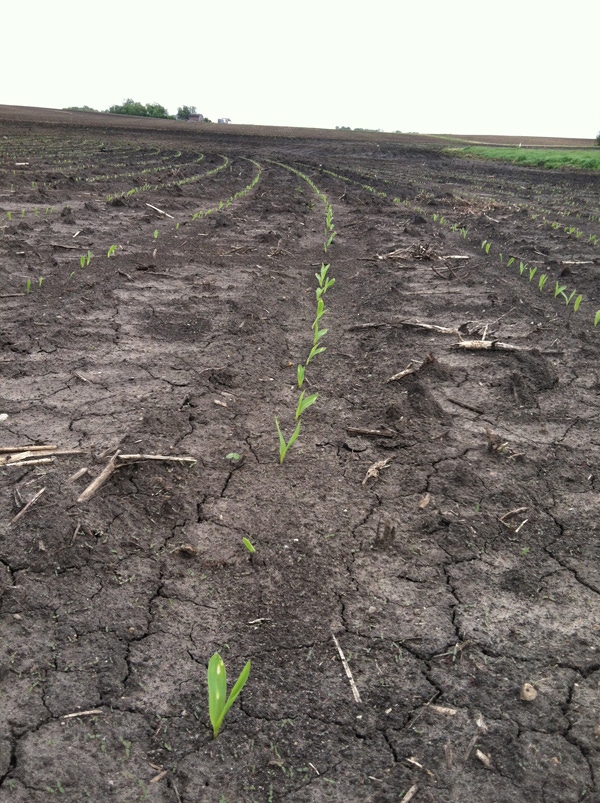June 5, 2015

Corn is less flexible than wheat and soybeans in filling in gaps in the row after emergence and it also does not compete well with other nearby plants early in the season. Therefore, stand uniformity is a much more important goal with corn than with many other crops. Better uniformity means higher yields so striving for improved uniformity will help improve productivity and profitability.
What are the yield loses associated with variable stands? For the past two years, with initial funding from the North Dakota Corn Growers and under the leadership of Lindsey Novak, a graduate student in Plant Sciences, a number of area and county Extension agents have assessed plant stand uniformity and measured its impact on yield. Averaged over all field locations, they found that within a planter width, the most variable row yielded 9 bu/A less than the least variable row. The most common problem causing the variability was variability in emergence date and not skips and doubles. In fact, doubles were not a common problem in most fields, suggesting that most planters used in the fields sampled were very good at ensuring singulation.
When measuring the yield loss on a plant basis, skips were the most impactful, followed by plants emerging 11-17 days after early emerging seedlings (Table 2). Plants next to a skip could add 10% greater yield when compared to normal spacing, but this was much less than the 50% needed to totally compensate for the lost plant. Plants next to a late emergers were able to add 5% greater yield, but again, they could not completely compensate for the loss of production by plants emerging later.
There are a number of causes of poor emergence uniformity. Skips can be caused by non-viable seed and one should expect some skips as seed lots normally have germination percentages around 90 to 95. Doubles can be traced back to a planter problem. Though doubles generally do not result in a yield reduction (data not shown), they are not an efficient use of seed. Difference in the timing of emergence is caused by differences in access to soil moisture by the seeds, differences in soil temperature and/or seeding depth. Uniform moisture was a big issue for many fields earlier this spring. Determining the optimum seeding depth is not always easy and is a key decision impacting emergence in dry soils. Planting into moisture is recommended if no rain is forecast in the next 5 to 10 days. Planting too deep, prior to a heavy rain, on the other hand can slow emergence and in heavy soils that are prone to waterlogging, result in stand loss. The cool weather this spring accentuated emergence problems. Small differences in the temperature that the seed encounters can be caused by difference in depth of seeding and the amount of residue that is retained directly above the seed. Uniform seeding depth (planting speed impacts this) and uniform residue cover should be evaluated if you are disappointed in the uniformity of emergence timing this year.
Read this from North Dakota State University.
 You might also like:
You might also like:
You May Also Like




